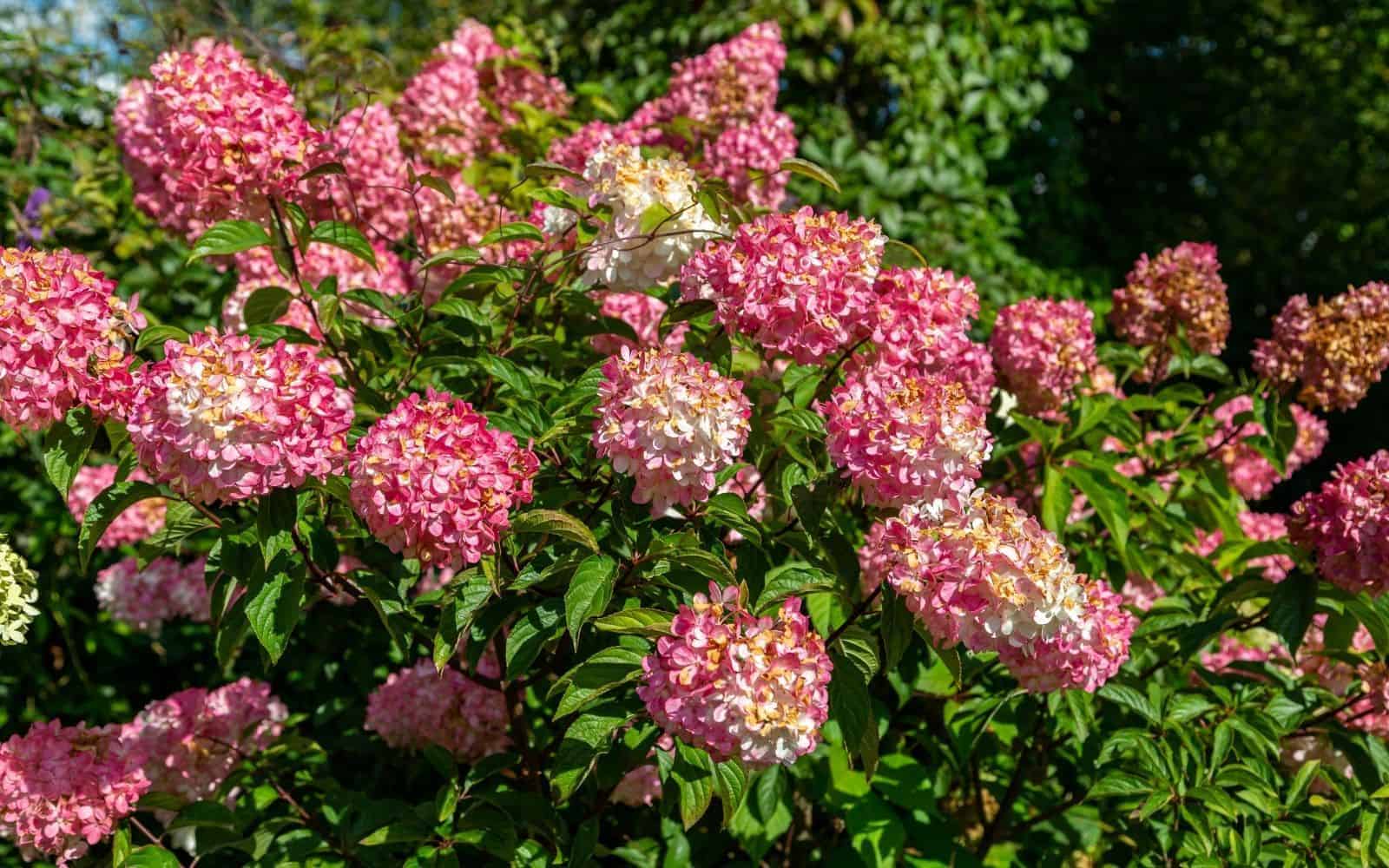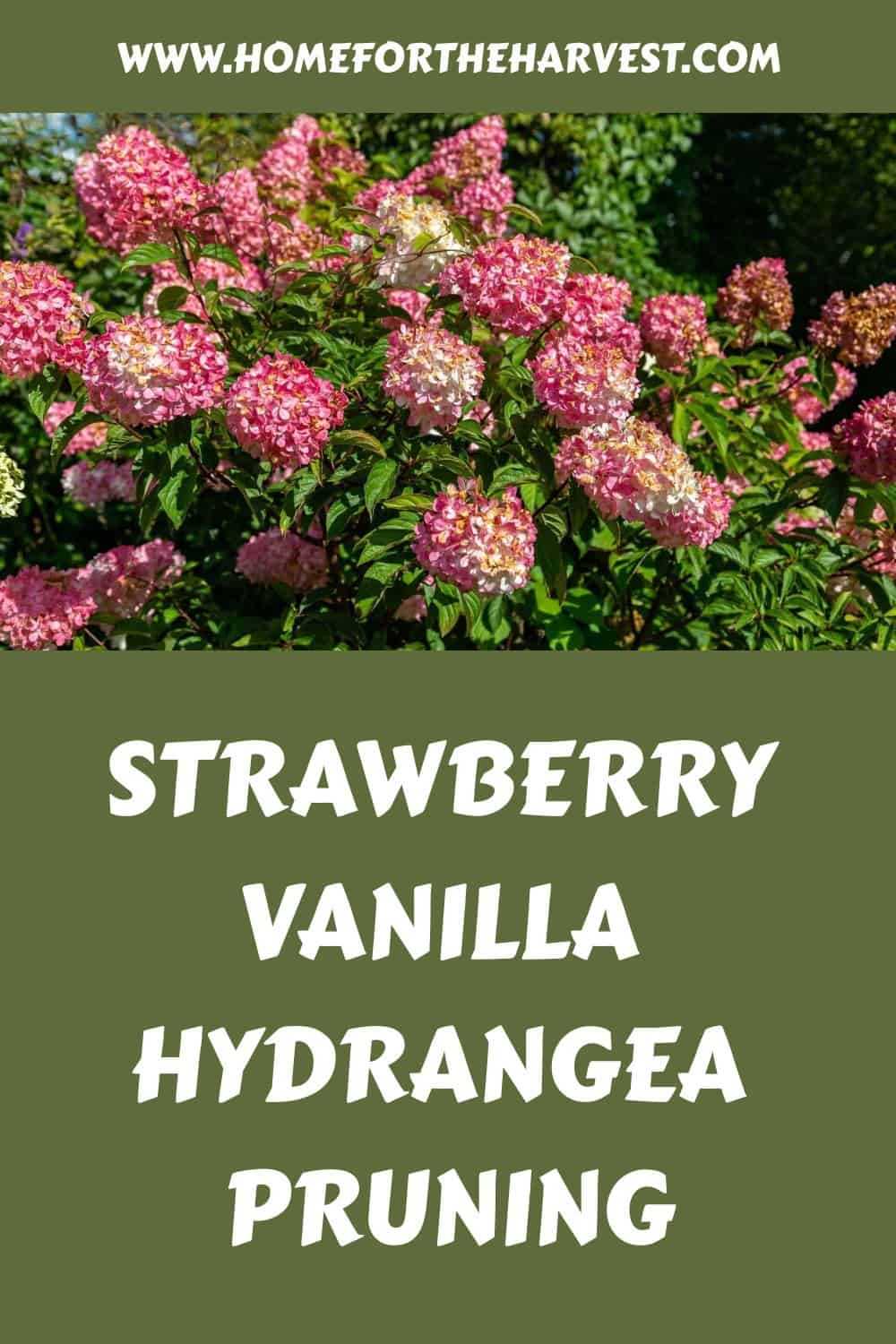Strawberry Vanilla hydrangea pruning is a good maintenance task for beginners and experienced gardeners alike. With just a few simple steps, you’ll have beautiful blooms all season long.
Strawberry Vanilla hydrangea shrubs are best pruned in late winter or early spring. Start by removing any dead, damaged, or diseased branches with clean, sharp pruning shears. Then focus on crowded areas, removing branches that grow inwards or cross and rub other branches. Lastly, trim back any overly long, weak branches and give the shrub a nice overall 5′-6′ spherical shape.
In this blog post, we’ll cover everything from the basics of pruning strawberry vanilla hydrangeas through aftercare tips & tricks so that you can enjoy them without any fuss. So if you’re ready for gorgeous flowers, let’s dive in!
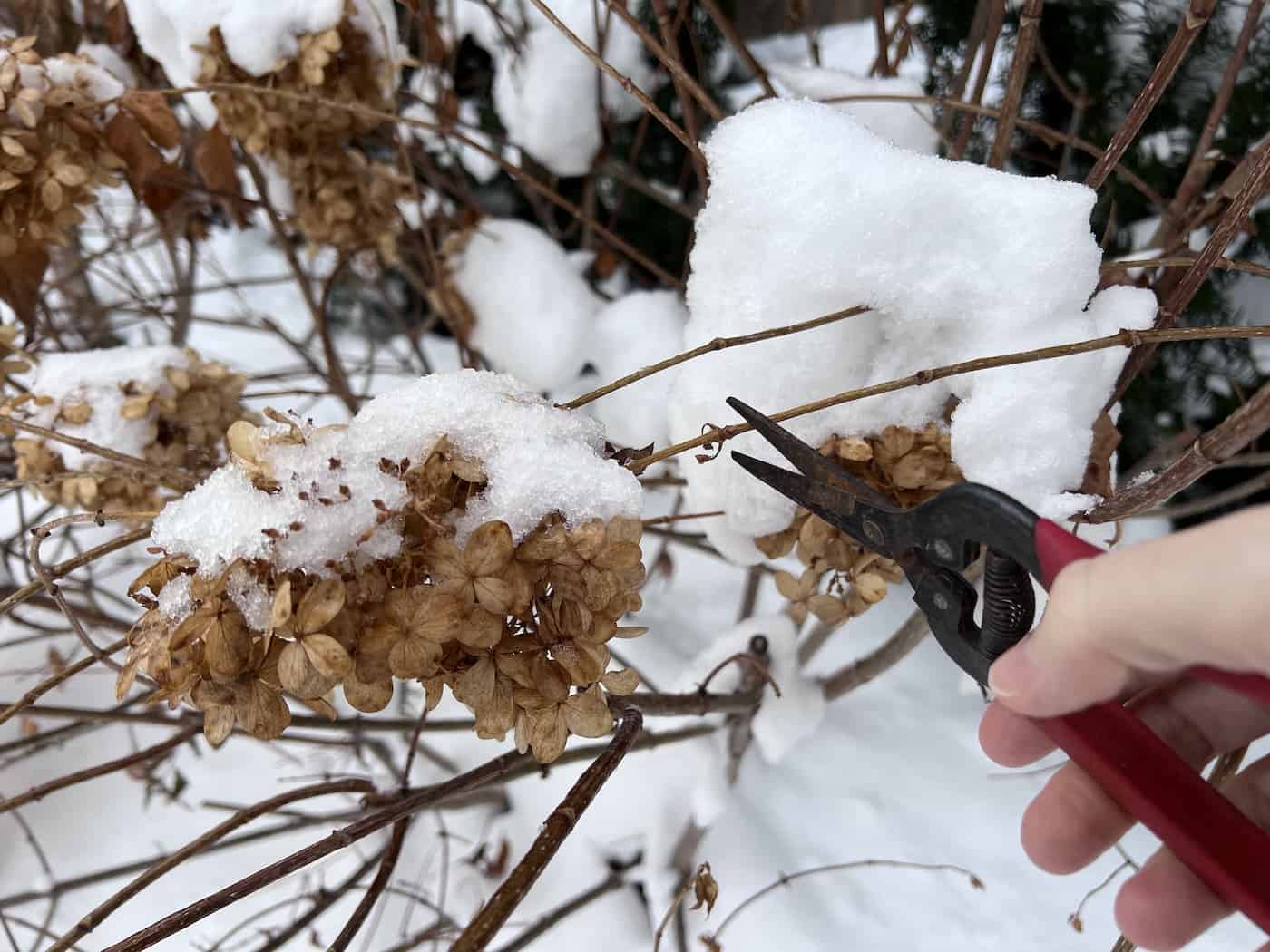
Pruning basics for Strawberry Vanilla hydrangea
When it comes to pruning, timing is everything. The ideal time for most plants, including this hydrangea, is late winter or early spring before new growth begins. This allows you to shape the plant while still dormant and gives it plenty of time to recover from any cuts made during the pruning season.
The tools used for pruning depend on the shrub’s size and age. Hand shears are good for small branches, while loppers are better suited for larger ones. A sharp pair of bypass shears will make clean cuts that heal quickly without damaging the bark around them, which can lead to disease and infection later on down the line if not properly cared for after cutting back branches.
When making your cuts, try not to leave stubs behind as this can cause dieback over time due to the lack of proper healing process taking place within the area where the cut was made. Instead, take out the whole branch back to its base. Aim for just above another bud so that the new branch will grow outwards rather than straight up into the air like a dead end would do when left uncut.
Lastly, always remember never to remove more than one-third total foliage from any given shrub or tree at once since too much trimming all at once could shock the plant.
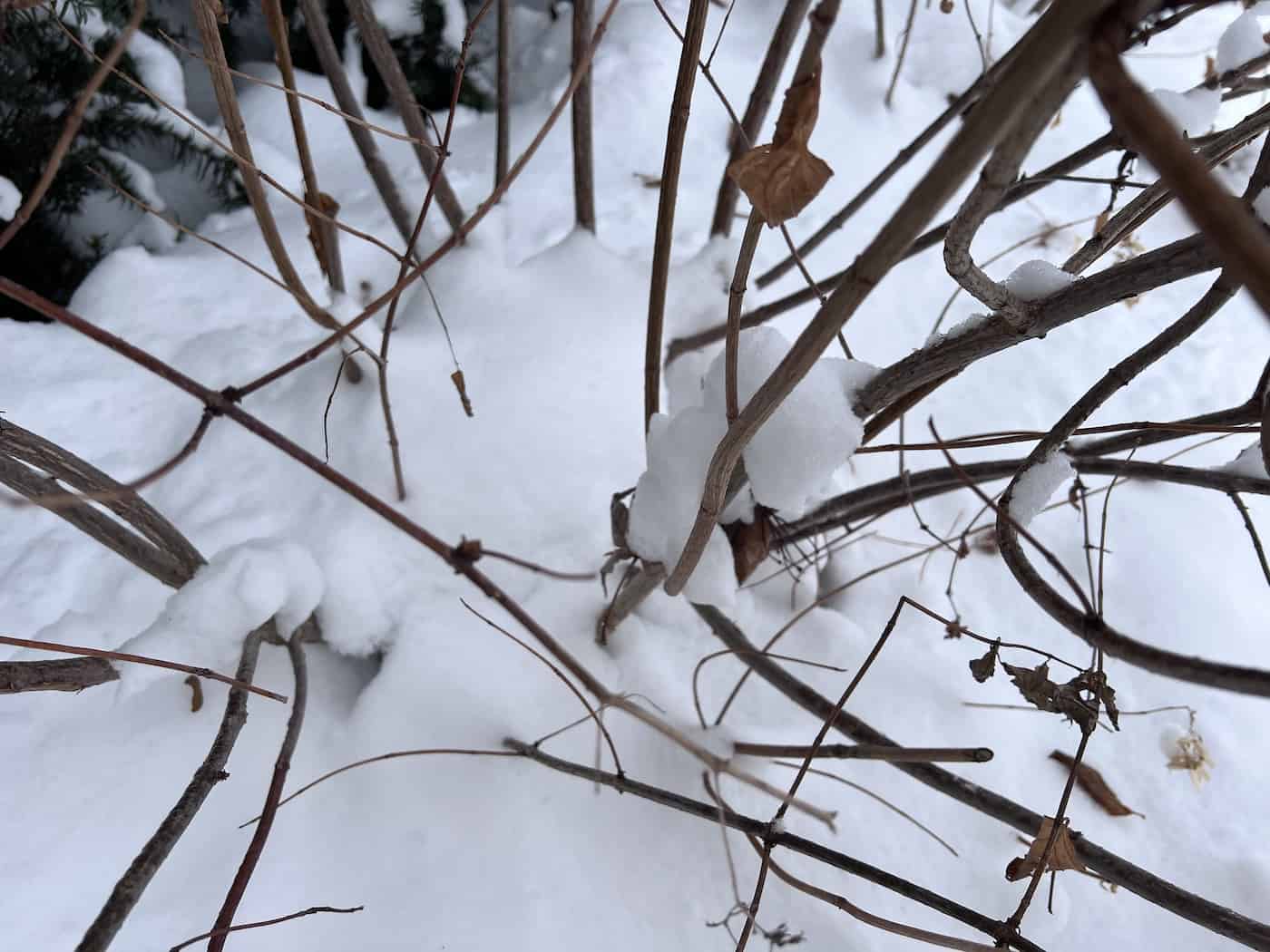
Pruning Strawberry Vanilla hydrangea
Strawberry Vanilla Hydrangeas are a beautiful and unique addition to any garden. Pruning is an important part of caring for these plants, as it helps them stay healthy and look their best.
The best time to prune Strawberry Vanilla hydrangea is in the late winter or early spring. That said, any branches that are dead, damaged, or diseased can and should be removed whenever they are observed. Spent flowers can be deadheaded during annual pruning at the end of winter dormancy but should be trimmed off in the fall where snow loads are heavy.
When pruning Strawberry Vanilla Hydrangeas, start by removing dead, damaged, or diseased branches. Dead branches can be difficult to see in late winter, but you can usually see swelling buds on healthy branches by early spring. Branches damaged by winter winds, snow, or pests such as deer are usually easier to observe.
The next step in pruning Strawberry Vanilla Hydrangeas is to identify which parts of the plant need thinning. Generally speaking, you’ll want to focus on removing any old or weak wood from the base of the shrub as well as thinning out overcrowded stems near the top of the bush. Additionally, if there are any crossing branches or shoots growing inwards towards the center of the shrub, those should be removed as well.
It’s usually best to remove the entire branch down to where they meet a main branch. Avoid leaving stub branches. Also, be cognizant of the amount of wood you’re removing overall. Generally speaking, no more than one-third of a plant should be removed at once for optimal results. The idea is to leave a strong framework that leaves lots of room for air circulation.
When pruning Strawberry Vanilla hydrangeas, make sure you have all necessary tools, such as sharp bypass hand shears/pruners (for cutting smaller branches), loppers (for larger branches), and a saw (if needed). It’s also helpful to have some gloves handy so that thorns don’t scratch up your hands during work! Lastly make sure you have bins or a trailer for trimmings, as this will help keep things tidy while working in your garden space!
One tip when dealing with thicker stems is first to use loppers, then follow up with hand shears/pruners for finer detail work; this will give a cleaner finish overall compared to just using one tool alone! Another trick when trying to decide which parts need trimming is to stand back from time to time throughout process and get a different perspective. Sometimes taking a few steps away can reveal hidden spots missed before! Finally, always remember less is more when it comes to pruning – never take too much off a single branch; otherwise, risk damaging the entire shrub.
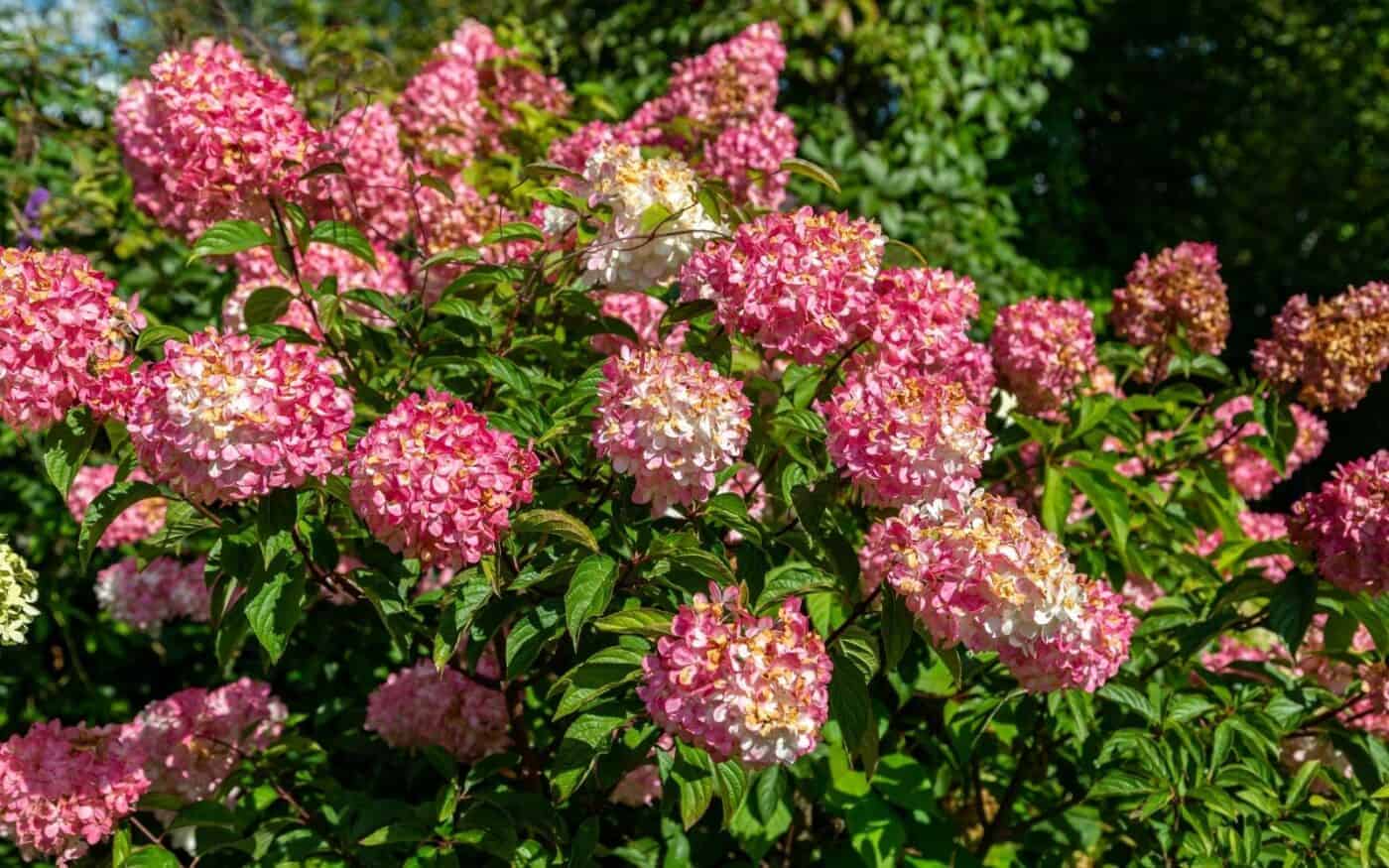
Tips & tricks for panicle hydrangea pruning
When it comes to pruning strawberry vanilla hydrangeas, the key is to use sharp, clean shears and avoid over-pruning. It’s important to remember that these plants are not meant to be pruned severely. Instead, they should be lightly trimmed so as not to damage their delicate blooms or foliage. Severe pruning can delay the next season’s blooms.
Before you begin trimming your hydrangea, make sure you have the right tools for the job. A pair of sharp bypass shears is ideal for this type of plant because they will help you get a clean cut without damaging the stems or leaves. You may also want to invest in a pair of long-handled loppers if you plan to tackle larger branches or thicker stems.
When it comes time actually to start pruning your strawberry vanilla hydrangea, there are a few things you should keep in mind. Always start by removing any dead or diseased wood first before moving on to healthy growth; this will help prevent the further spread of disease and promote healthier new growth later on down the line.
Additionally, don’t forget about shape when pruning – aim for an overall rounded form with evenly spaced out branches rather than one large clump at the top and thinning out towards the bottom; this helps create better air circulation throughout your plant which can help reduce pests and diseases from taking hold too easily. Finally, try not to remove more than 1/3rd of total growth each year – excessive pruning can lead to weak flowering and poor overall health for your plant in general.
Aftercare
Aftercare is an important part of any pruning job. Properly caring for your plants after they’ve been trimmed can help them stay healthy and vibrant.
Pruned branches should be removed from the area as soon as possible so they don’t attract pests or disease-causing organisms like fungi or bacteria into the garden bed. Pruned material should also be disposed of properly—never leave it lying around where animals could get at it!
Watering is key to successful aftercare. Depending on the type of plant, it may need more or less water than usual following a pruning session. Make sure to check the soil regularly and adjust watering accordingly. If you live in a dry climate, consider adding organic mulch around the base of your plants to help retain moisture in the soil.
Fertilizing can also be beneficial for plants that have been recently pruned. In general, fertilize during spring or fall, depending on your climate zone—this will give your plants time to recover from their trimming before winter sets in (or summer arrives). Use a balanced fertilizer that contains nitrogen, phosphorus, and potassium; this will provide essential nutrients for optimal growth and health.
Finally, keep an eye out for signs of stress, such as wilting leaves or discoloration; if you notice anything unusual happening with your newly-pruned plants, then take action right away by adjusting their care routine accordingly (e.g., increasing water frequency). This way, you can ensure that all your hard work pays off.
FAQs about Strawberry Vanilla hydrangea pruning
When should I cut back my Strawberry Vanilla hydrangea?
It is best to cut back your Strawberry Vanilla Hydrangea in late winter or early spring, before new growth begins. Never cut back more than about 1/3 of the overall height/width of the shrub.
Be sure to remove any dead or diseased branches and any weak stems. Prune lightly so you don’t damage the plant, and always use sharp pruners for a clean cut.
Does Strawberry Vanilla hydrangea bloom on new wood?
Yes, Strawberry Vanilla hydrangeas do bloom on new wood. They do not bloom on old wood like bigleaf hydrangeas (Hydrangea macrophylla).
Strawberry Vanilla hydrangeas can be pruned in winter or early spring. When pruning, it is important to remember that these plants will only flower on new wood, so cutting back too much of the plant’s overall existing stems could reduce flowering for the season as it must rebuild its framework.
What month do you prune Strawberry Vanilla hydrangeas?
Strawberry Vanilla hydrangeas are generally pruned in or around March. In warmer areas like Zones 7-8, they may be pruned in February or even January if weather is mild. In colder areas like Zones 3-4, pruning may have to wait until late March or April.
Before you go…
Pruning your strawberry vanilla hydrangea can be a rewarding experience. Not only is it the time of year for this task, it’s also the time to fertilize this plant. Here’s a guide on exactly how to do that. Read it next to make sure your plant doesn’t suffer a deficiency as it goes into the upcoming flowering season.


